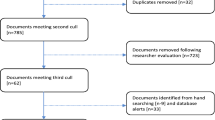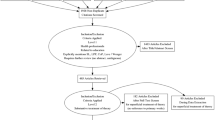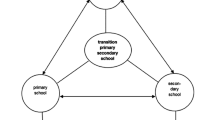Abstract
Due to the effects of globalisation and rapid technological development, traditional linear life course patterns of the past are gradually disappearing, and this affects education and learning systems as well as labour markets. Individuals are forced to develop lifestyles and survival strategies to manage job insecurity and make their skills and interests meet labour market needs. In modern attempts to develop and implement institutional provision for lifelong learning, guidance and counselling play an important role. The current Danish guidance system is well-organised, highly structured and professionalised. By contrast, Chinese guidance is still fragmented and “sectorisational”. This paper explores whether elements of the highly structured and professionalised Danish guidance system and practice might be applicable to the Chinese context. The author begins by outlining international and national factors which are affecting citizens’ life and career planning. She then presents and discusses the evolution of guidance and the different elements of provision in each of the two countries. Next, She compares the concepts and goals of “lifelong guidance” in Denmark and China, pointing out their similarities and differences and their respective strengths and weaknesses. The paper concludes with some suggestions for the further development of guidance in China.
Résumé
Orientation tout au long de la vie : comment les services d’orientation et de conseil soutiennent l’apprentissage tout au long de la vie dans les contextes contrastrés de la Chine et du Danemark – Par suite de la mondialisation et du développement technologique accéléré, les modèles traditionnels des parcours de vie linéaires qui étaient valables par le passé disparaissent progressivement, ce qui affecte les systèmes d’éducation et d’apprentissage tout autant que les marchés du travail. Les individus doivent adopter des modes de vie et des stratégies de survie qui leur permettent de gérer l’insécurité professionnelle et de faire correspondre leurs compétences et préférences aux besoins du marché du travail. Dans les tentatives modernes de concevoir et de réaliser des prestations institutionnelles d’apprentissage tout au long de la vie, les services d’orientation et de conseil jouent un rôle important. Le système actuel d’orientation au Danemark est bien organisé, très structuré et professionnel. En revanche, l’orientation en Chine est encore fragmentée et « sectorisée ». L’auteure explore dans quelle mesure des éléments du système d’orientation danois hautement structuré et professionnalisé ainsi que sa transposition seraient applicables au contexte chinois. Elle aborde en premier lieu les facteurs internationaux et nationaux qui affectent les plans de carrière et de vie des citoyens. Elle présente et analyse ensuite l’évolution des services d’orientation et les divers éléments de la prestation dans les deux pays. Enfin, elle compare les concepts et objectifs de « l’orientation tout au long de la vie » au Danemark et en Chine, signalant leurs similitudes et leurs différences ainsi que leurs forces et faiblesses respectives. Elle conclut par plusieurs suggestions pour l’évolution ultérieure des services d’orientation en Chine.
摘要
终身指导:指导和咨询如何支持终身学习的中丹比较– 由于全球化和技术迅速发展的影响, 过去传统的线性生命历程模式正在逐渐消失, 这对教育、学习体系和劳动力市场都产生了影响。个人被迫发展新的生活方式和生存策略来应对工作的不安全感, 并使个人技能和兴趣满足劳动力市场的需求。在现代终身学习的发展和实施中, 指导和咨询发挥着重要作用。丹麦的终身指导已具有高度的组织性、结构化和专业化。相比之下, 中国的终身指导还未形成一定的体系。本文探讨了高度结构化和专业化的丹麦指导体系和实践是否可适用于中国。文章首先概述了影响人们生活和职业生涯规划的国际、国内因素。然后论述两国终身指导的发展演变和当前的指导服务情况。接下来, 比较了中丹两国终身指导理念和目标的异同, 并指出了他们之间的优劣。最后, 为终身指导在中国的进一步发展提出了一些建议。
Similar content being viewed by others
Notes
The European Lifelong Guidance Policy Network (ELGPN) was established with the aim of assisting European Union Member States and the European Commission “in moving European cooperation on lifelong guidance forward in both the education and the employment sectors” (http://www.eqavet.eu/gns/policy-context/european-vet-initiatives/european-lifelong-guidance-policy-network.aspx [accessed 22 July 2016]).
“The OECD Development Centre is a platform to bring together countries at different levels of development to discuss policies that stimulate growth and improve living conditions” (http://www.oecd.org/newsroom/china-signs-cooperation-agreements-with-oecd-and-joins-oecd-development-centre.htm [accessed 25 July 2016]).
I am referring to the“China International Forum of Career Planning and GCDF [Global Career Development Facilitators] Global Summit”.
As Per Kongshøj Madsen points out, skills mismatch is a considerable factor which particularly affects youth unemployment in Denmark (Madsen 2015).
Children in Denmark may attend preschool, but compulsory education starts in primary school at age 6 and ends in lower secondary school at age 16. Some pupils then go on to vocational schools, while others continue in upper secondary school for another three years, becoming eligible to apply for university study.
These steps are a continuation of the Chinese Economic Reform and Opening policy initiated by Deng Xiaoping in 1978.
Children in China start primary school (grades 1–6) at age six, move on to junior middle school (grades 7–9) at age 12, finishing compulsory schooling when they are about 15 years old. After that, there is middle (senior high) or vocational school (grades 10–12), which is completed by pupils who are on average 18 years old. After graduating from senior high school, students who want to enter university must pass the National College Entrance Examination.
Psychometric testing is a method used in selecting students or job applicants for acceptance into a course, an apprenticeship or a job. The purpose is to assess participants’ reasoning abilities by setting tasks involving numbers, language, diagrams and situations which require judgements and decisions.
“Two-way choice, rational flow” refers to the employers interviewing the graduates directly. Graduates’ schools can issue a recommendation (letter). After the a successful interview, the graduate and the employer sign the employment agreement. The employment plan is formed with the approval of the local department in charge of the employment and the graduate’s school. Both employers and employees are free to choose to terminate the contract (two-way choice). If it is the employee who is not satisfied with the enterprise, he or she can submit an application for leave, and cancel the contract with the enterprise, which means that employers and employees are equal in the process of filling or finding a position.
From 1985 to 1998, the Ministry of Education (MoE) of the People’s Republic of China was called the State Education Commission (SEC).
References
Bezanson, L., & O’Reilly, E. (Eds.). (2002). Making waves, vol. 2. Connecting career development with public policy. Ottawa, ON: CCDF.
CEDEFOP (European Centre for the Development of Professional Training). (2009). Professionalising career guidance: Practitioner competences and qualification routes in Europe. CEDEFOP panorama series, 164. Luxembourg: Office for Official Publications of the European Communities. Retrieved 19 July 2016 from www.cedefop.europa.eu/files/5193_en.pdf.
Cirius. (2008). Guidance in education—The educational guidance system in Denmark. Copenhagen: Cirius.
CoEU (Council of the European Union). (2004, May 18). Resolution of the Council on strengthening policies, systems and practices in the field of guidance throughout life in Europe. Retrieved 22 July 2016 from http://ec.europa.eu/education/policies/2010/doc/resolution2004_en.pdf.
CoEU. (2008). Resolution of the Council and of the Representatives of the Governments of the Member States, meeting within the Council of 21 November 2008 on better integrating lifelong guidance into lifelong learning strategies. Official Journal of the European Union, C 319, 13 December 2008, pp. 4–7. Retrieved 22 July 2016 from http://eur-lex.europa.eu/legal-content/EN/TXT/?uri=uriserv:OJ.C_.2008.319.01.0004.01.ENG&toc=OJ:C:2008:319:FULL.
Danish Government. (2003). Act on guidance in relation to choice of education, training and career. Copenhagen: The Danish Government.
Danish Government. (2011). Aftale om en senere tilbagetrækning [Agreement on later withdrawal]. Copenhagen: Ministry of Finance. Retrieved 29 July 2016 from https://www.fm.dk/Nyheder/Pressemeddelelser/2011/05/20110513%20Aftale%20om%20senere%20tilbagetraekning.aspx.
Danish Government. (2015). The national reform programme: Denmark 2015. Copenhagen: The Danish Government. Retrieved 25 July 2016 from http://ec.europa.eu/europe2020/pdf/csr2015/nrp2015_denmark_en.pdf.
Danish Ministry of Education. (2007). Denmark’s strategy for lifelong learning: Education and lifelong skills upgrading for all. Copenhagen: Danish Ministry of Education.
ELGPN (European Lifelong Guidance Policy Network). (2012). Lifelong guidance policy development: A European resource kit. ELGPN Tools No. 1. Jyväskylä: University of Jyväskylä/Finnish Institute for Educational Research (FIER)/ELGPN. Retrieved 19 July 2016 from http://www.eucen.eu/images/posts/elgpn_resource_kit_2011-12_web.pdf.
Euroguidance Denmark & The Danish Agency for Higher Education. (2014). Guidance in education—The educational guidance system in Denmark. Retrieved 19 July 2016 from https://www.ug.dk/sites/default/files/guidance_in_education_2014.pdf.
European Council. (2000). Presidency conclusions. Lisbon European Council 23 and 24 March. Brussels: European Council. Retrieved 22 July 2016 from http://www.europarl.europa.eu/summits/lis1_en.htm.
Evraiff, W. (Ed.). (1997). Proceedings of the sixth international counseling conference. Beijing: Beijing Normal University Press.
Gracey, S., & Kelly, S. (2010). Changing the NEET Mindset: Achieving more effective transitions between education and work. London: Learning and Skills Network.
Hiebert, B., & Bezanson, L. (Eds.). (2000). Making waves: Career development and public policy. Ottawa, ON: Canadian Career Development Foundation (CCDF).
Hou, Z. J., & Zhang, N. (2007). Counseling psychology in China. Applied Psychology: An International Review, 56(1), 33–50.
Jensen, S. (2008). Quality assurance in the Danish guidance system. The Second EU conference on lifelong guidance policies, “Managing change: lifelong guidance in Europe”, held in Lyon, France 17–18 September. Retrieved 19 July 2016 from www.elgpn.eu/meetings/meetings-2007-2008/the-3rd-elgpn-plenary-meeting/meeting-presentations/quality-assurance-in-the-danish-guidance.pdf.
Jiang, G. (2005). The development of school counseling in the Chinese mainland: A review. Journal of Basic Education, 14(1), 65–82. (in Chinese).
Leuwerke, W., & Shi, Q. (2010). The practice and perceptions of school counsellors: A view from urban China. International Journal for the Advancement of Counselling, 32(1), 75–89.
Madsen P. K. (2015). Youth unemployment and the skills mismatch in Denmark: In-depth analysis of the EMPL Committee. Committee on Employment and Social Affairs. IP/A/EMPL/2014-10, PE 536.322. Brussels: European Parliament. Directorate-General for Internal Policies. Policy Department A, Economic and Scientific Policy. Retrieved 25 July 2016 from http://www.europarl.europa.eu/RegData/etudes/IDAN/2015/536322/IPOL_IDA(2015)536322_EN.pdf.
Ministry of Labour and Social Security China. (2005). National professional standards for career guidance counsellors. Beijing: China Labour and Social Security Publishing House. (in Chinese).
MoE China (Chinese Ministry of Education). (1994). Outline of career guidance in general secondary school. Beijing: MoE China (in Chinese). Retrieved 20 November 2015 from http://lw.china-b.com/jyxxlw/lwzx_363701.html.
MoE China. (1995). Notice on opening elective course of employment guidance in institutions of higher education. Beijing: MoE China (in Chinese). Retrieved 20 November 2015 from http://www.people.com.cn/item/flfgk/gwyfg/1995/206004199505.html.
MoE China. (2002). On strengthening career guidance in vocational and technical school. Beijing: MoE China (in Chinese). Retrieved 29 August 2016 from http://www.moe.edu.cn/publicfiles/business/htmlfiles/moe/moe_30/200408/2849.html.
MoL China (Chinese Ministry of Labour). (1994). Career Guidance Approach. Retrieved 29 August 2016 from http://www.law-lib.com/law/law_view.asp?id=10806.
Noworol, C. (2011). Lifelong guidance. Journal for Perspectives of Economic Political & Social Integration, 17(1–2), 33–53.
OECD (Organisation for Economic Co-operation and Development). (2004). Career guidance and public policy: Bridging the gap. Paris: OECD. Retrieved 21 July 2016 from http://www.oecd.org/edu/innovation-education/34050171.pdf.
OECD. (2010). Learning for jobs. Paris: OECD.
Plant, P. (2009). Fæste. Dansk uddannelses- og erhvervsvejledning, 1886–2009 [Foothold. Danish educational and vocational guidance, 1886–2009]. Fredensborg: Studie og Erhverv.
Plant, P., & Thomsen, R. (2012). Career guidance in Denmark: Social control in a velvet glove. Orientación y Sociedad, 11, 1–17. Retrieved 19 July 2016 from http://www.memoria.fahce.unlp.edu.ar/art_revistas/pr.5157/pr.5157.pdf.
Rizvi, F., & Lingard, B. (2010). Globalizing education policy. London: Routledge.
Statistics Denmark. (2009): Statistical yearbook 2009. Copenhagen: Statistics Denmark. Retrieved 19 July 2016 from http://www.dst.dk/Site/Dst/Udgivelser/GetPubFile.aspx?id=14468&sid=sy2009.
Statistics Denmark. (2016). Migrations. Retrieved 28 August 2016 from http://www.dst.dk/en/Statistik/emner/flytninger.
UN (United Nations). (2011). World youth report 2011. Youth employment: Youth perspectives on the pursuit of decent work in changing times. New York: United Nations. Retrieved 19 July 2016 from http://www.unworldyouthreport.org/.
Wang, J. R. (2008). The exploration of carrying out comprehensive career education for college students. Journal of Aba Teachers College, 2, 46–52. (in Chinese).
Yu, G., & Wang, Y. (2002). Mental health education in primary and secondary schools: Current status, problems and development trends. Educational Research, 7, 70–73. (in Chinese).
Zelloth, H., Watts, T. & Sultana, R. (2007). Career guidance in the MEDA region. In B. Chakroun (Ed.), Shaping responsive TVET systems in the MEDA region: The impact of a regional approach (pp. 10–18). MEDA-ETE Regional project “Education and training for employment” (Component 1). Second Annual Forum, Rome, 19–20 April. Working document. Turin: European Training Foundation. Retrieved 19 July 2016 from http://www.etf.europa.eu/webatt.nsf/0/C12578310056925BC125777700502A4C/$file/NOTE883K59.pdf.
Acknowledgments
Funding was provided by the Chinese Ministry of Education, Project of Humanities and Social Sciences on Young Fund (Project No. 15YJC880025).
Author information
Authors and Affiliations
Corresponding author
Rights and permissions
About this article
Cite this article
Zhang, Z. Lifelong guidance: How guidance and counselling support lifelong learning in the contrasting contexts of China and Denmark. Int Rev Educ 62, 627–645 (2016). https://doi.org/10.1007/s11159-016-9594-1
Published:
Issue Date:
DOI: https://doi.org/10.1007/s11159-016-9594-1




